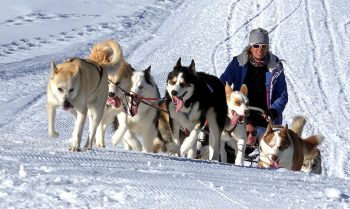Understanding the dynamics of your relationship with your dog is crucial for a harmonious living situation. Dogs, by nature, are pack animals and instinctively look for a leader in their pack, which, in a domestic setting, should be their human owner. When a dog does not view its owner as the pack leader, it can lead to various behavioral issues and disrupt the household’s balance. Recognizing the signs that your dog doesn’t see you as their pack leader is the first step in addressing and rectifying these issues, ensuring a healthy, respectful, and mutually beneficial relationship between you and your dog. This article delves into seven signs indicating your dog doesn’t see you as their pack leader and explores the reasons behind these behaviors.
1. Ignoring Commands
A clear sign that your dog doesn’t see you as the pack leader is when they consistently ignore your commands. This behavior suggests that your dog does not respect your authority or consider you to be in charge. All members understand their rank in a pack and follow the leader’s cues without hesitation. When a dog disregards commands, it’s often because they feel the hierarchy has not been adequately established or they see themselves as the dominant figure in the relationship.
2. Pulling on the Leash
Leash pulling is another indication of a lack of recognition of you as the pack leader. When on walks, if your dog constantly pulls on the leash, trying to lead the way, it signifies they feel in control of the situation and the direction you both take. In contrast, a dog that sees its owner as the pack leader will walk calmly by their side, allowing the human to guide the path.
3. Food Aggression
Food aggression towards humans can be a sign of disrespect and a failure to acknowledge the owner as the leader. Pack leaders eat first in the wild and decide when others can eat. If your dog growls, snaps or shows aggression when you approach their food, it indicates they see themselves as having higher status, challenging your position as leader.
4. Jumping Up
While often seen as a sign of affection, jumping up on people can also be a dog’s way of asserting dominance, especially if the behavior is persistent and difficult to control. A dog that respects you as their pack leader will wait for an invitation for such close contact and will not invade personal space uninvited.
5. Refusing to Move
If your dog frequently refuses to move when you ask, taking a stubborn stance on walks or at home demonstrates a lack of respect for your leadership. This behavior shows they feel empowered to make decisions, resist your guidance, and challenge your authority.
6. Pushing Through Doorways First
A dog that always rushes to go through doorways ahead of you displays dominance, asserting their precedence over you. In a pack, the leader is the one who leads the way in new territories. Allowing your dog to precede you consistently can reinforce their belief that they are in charge.
7. Demanding Attention
While dogs naturally seek affection from their owners, constantly demanding attention on their terms—such as nudging your hand away from a task to pet them or barking at you until you interact—can be signs they don’t view you as the leader. This behavior suggests they believe they can dictate the terms of your interaction.
Recognizing these signs is pivotal in understanding your dog’s perception of the pack hierarchy within your home. Addressing these behaviors through consistent training and establishing clear rules and boundaries is essential. Doing so can help reinforce your position as the pack leader, leading to a more balanced and respectful relationship. Remember, leadership is not about being overly harsh or dominant but about providing guidance and setting limits with confidence and consistency. Mixed breeds and rescues are just as capable of showing these signs and responding to leadership as purebreds, emphasizing that understanding and communication are essential across all types of canine companions.
The post 7 Signs Your Dog Doesn’t See You as Their Pack Leader appeared first on iHeartDogs.com.

